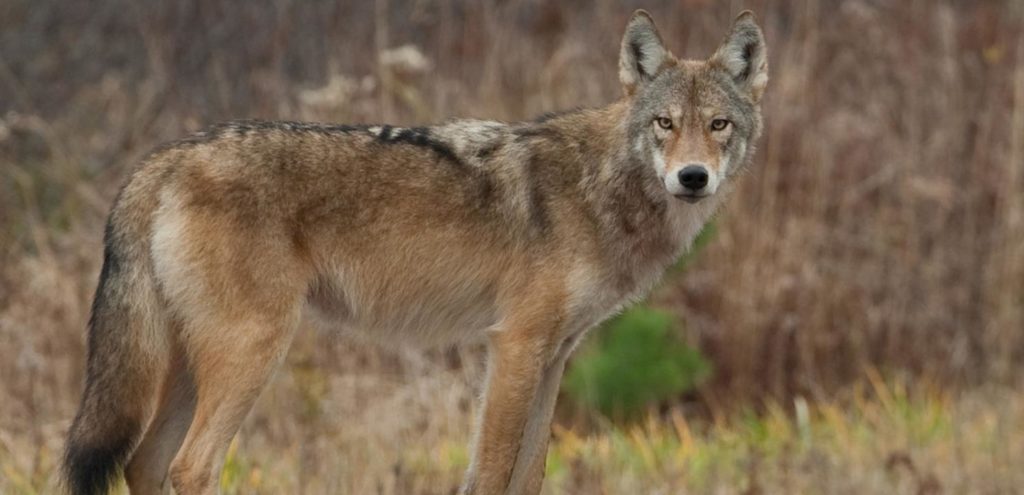It is impossible to tell eastern or red wolves from eastern coyotes just by looking at them. Dr. Linda Y. Rutledge from Trent University spoke at the Hastings Stewardship Council’s Winter Speaker Series, 2015.
Dr. Rutledge said one needs to do genetic testings to be sure. Even then it is sometimes hard to tell. There are two different types of DNA, mitochondrial DNA and the double helix DNA in the nucleus of the cell. The mitochondrial DNA comes down from mother to daughter, and she finds eastern wolves and eastern Coyotes have some of the same mitochondrial DNA and some have similar patterns of nuclear DNA.
Dr. Rutledge studies wolf genetics by studying scats. She uses the mucous around a scat (faeces) to get a sample an animal’s DNA.
There are not a lot of photographs of eastern wolves as there are not many of them and they are secretive. She showed an amazing video clip of a young wolf with an older wolf taken in Algonquin Park.
The eastern wolf, also knowns the red wolf or the Algonquin wolf, is heavier than the eastern coyote at around 65 lbs. The eastern coyote known locally as a bush wolf, a Tweed wolf, or a coyote, usually weighs between 25 – 45 lbs. The eastern wolf has a wider snout than a coyote. Coyotes vary in size and colour. The large grey wolf of northern Ontario and western Canada is the size of a German shepherd weighing around 80 lbs. or more.
Dr. Rutledge pointed out, “It is difficult to judge how big an animal is as one needs something to give a true perspective.”
She explained, that around 11,000 years ago glaciers covered this area and wolves had to move south. As the ice melted they gradually moved back in this area. The coyotes that moved east grew bigger than the coyotes that stayed in the west, and they sometimes bred with eastern wolves. The eastern wolves sometimes bred with the large grey wolves. In western Canada, grey wolves kill coyotes and do not breed with them. Recent DNA work has shown that the eastern wolf is separate species and, not as once thought, a subspecies of the grey wolf.
European settlers tried to exterminate the eastern wolves, and they retreated north into Algonquin Park and were brought close extinction. Nowadays, Algonquin Park is the core area for eastern wolves, and they are only protected in the park and the surrounding townships. There are only around 500 animals, of these 250 are mature and 100 are breeding animals. This size of the population is not large enough to sustain them in the long term. Eastern wolves are more susceptible to hunting and trapping and than eastern coyotes. They will do well in Algonquin if the park is managed for deer and moose. Unfortunately, sometimes wolves are killed by logging trucks. The northern grey wolf is doing well as there is vaste territory for them in northern Ontario.
Dr. Rutledge described why carnivores are important for ecosystems. She said, It is important to keep large carnivores to control the numbers of deer and other grazing animals. The density of deer is high in southern Ontario. In the Pinery Provincial Park numbers are up to 30 deer per square km. The deer have a considerable impact on the vegetation as they browse on trees and shrubs and this has led to the lost of song birds. In Ontario, there is a link between the height of trillium in a wood and the number of deer as deer graze on trillium. Grey wolves eat deer and moose; eastern wolves eat deer and coyotes have a very varied diet, but do not usually kill deer.
Wolves have been reintroduced into Yellowstone Park, which means the deer do not graze along the rivers so much, and the trees and shrubs are growing back.
One can find out more about the Eastern Wolf Survey and the work going on at Trent University

Let’s Eat! April 26th at 6!
Come out for a celebration of local foods, friendship, and community. The annual “Let’s Eat!” dinner will be catered once again by


